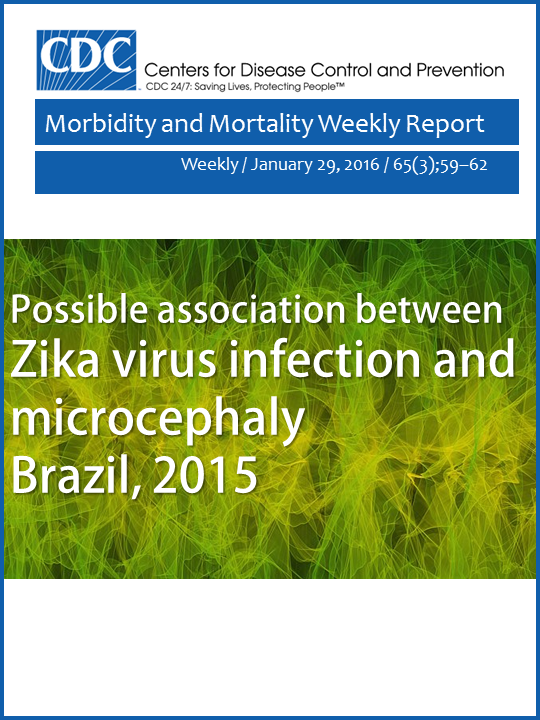Possible association between Zika virus infection and microcephaly — Brazil, 2015
CDC Morbidity and Mortality Weekly Report

Volume 65, Issue 3, 29 January 2016, Pages 59-62
Lavinia Schuler-Faccini; Erlane M. Ribeiro; Ian M.L. Feitosa; Dafne D.G. Horovitz; Denise P. Cavalcanti; André Pessoa; Maria Juliana R. Doriqui; Joao Ivanildo Neri; Joao Monteiro de Pina Neto; Hector Y.C. Wanderley; Mirlene Cernach; Antonette S. El-Husny,; Marcos V.S. Pone; Cassio L.C. Serao; Maria Teresa V. Sanseverino
Summary
What is already known about this topic?
An outbreak of Zika virus infection, a flavivirus transmitted by Aedes mosquitoes, was first recognized in northeastern Brazil in early 2015. In September, a sharp increase in the number of reported cases of microcephaly was reported in areas affected by the outbreak.
What is added by this report?
The Brazil Ministry of Health developed a case definition for Zika virus–related microcephaly (head circumference ≥2 standard deviations [SD] below the mean for sex and gestational age at birth). A task force and registry were established to investigate Zika virus–related cases of microcephaly and to describe the clinical characteristics of cases. Among the first 35 cases of microcephaly reported to the registry, 74% of mothers reported a rash illness during pregnancy, 71% of infants had severe microcephaly (>3 SD below the mean), approximately half had at least one neurologic abnormality, and among 27 who had neuroimaging studies, all were abnormal. Cerebrospinal fluid from all infants is being tested for Zika virus; results are not currently available.
What are the implications for public health practice?
The increased occurrence of microcephaly associated with cerebral damage characteristically seen in congenital infections in Zika virus-affected areas is suggestive of a possible relationship. Additional studies are warranted to confirm the association and to more fully characterize the phenotype. In addition to removing potential breeding areas for mosquitoes, pregnant women in Zika-affected areas should wear protective clothing, apply a U.S. Environmental Protection Agency (EPA)-approved insect repellent, and sleep in a screened room or under a mosquito net.


